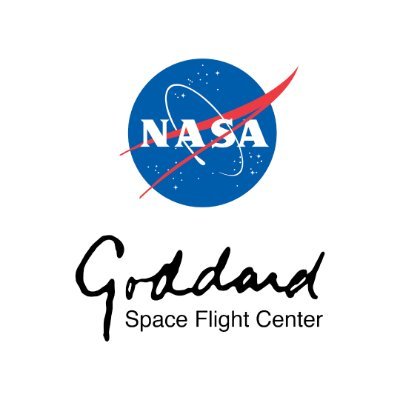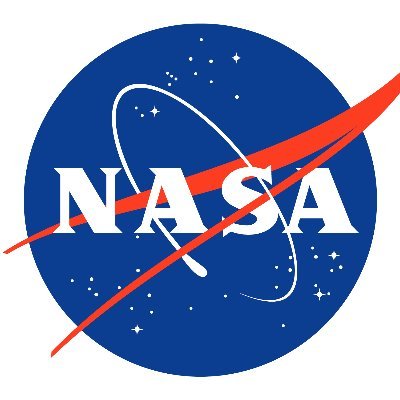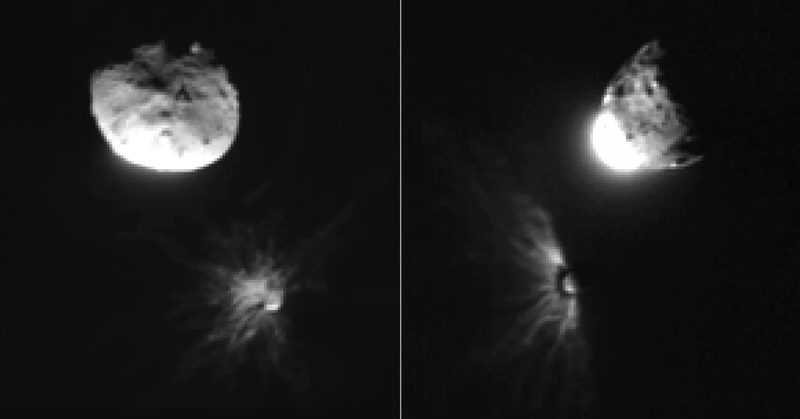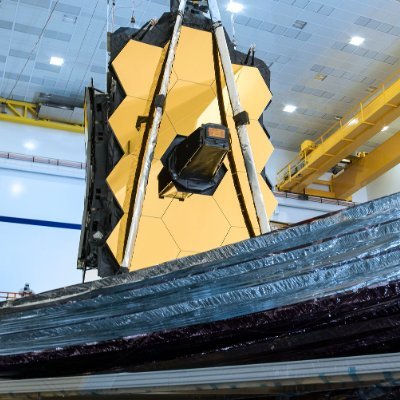
NASA Goddard
@NASAGoddard
Followers
939K
Following
8K
Media
9K
Statuses
25K
Welcome to your friendly neighborhood space flight center, home to the largest community of scientists & engineers on Earth. Verification: https://t.co/pNeQVaC40m
Greenbelt, MD USA
Joined February 2009
Already in the scary season mood? 👻 Take a trip to some of the darkest skies in the U.S., in the Great Basin National Park, seen here by the Suomi NPP spacecraft. The satellite can monitor electric lights at night, shining with a ghostly glow. https://t.co/AlzcOestmi
3
10
37
Is this a Twilight reference? 🐺 @NASAWebb identified a new moon orbiting Uranus, expanding the number of the planet's satellites to 29. The newfound moon is estimated to be just six miles in diameter — far too small to be seen in previous observations.
32
99
442
Magic is in the air. 🪄 No, wait, MAGEQ is in the air! This summer, six aircraft flew over the mid-Atlantic as part of MAGEQ (pronounced “magic”), a collection of missions involving @nasa and others to study air quality, forestry, fire management, & more. https://t.co/GFCw8YgAfh
14
35
195
International Observe the Moon Night is next Saturday, October 4. Here's a brand-new way you can observe the Moon with NASA:
How did the Moon come to be? 🌕 Every impact leaves behind a story. With our new citizen science project, Lunar Melt, you can help NASA study lunar craters + boulders, right from your computer. Get started 👉 https://t.co/hCgmwI5t9t
35
121
407
Launch ✅ Deployment ✅ Acquisition of signal ✅ After an on-time launch at 7:30am EDT this morning, Wednesday, Sept. 24, all three spacecraft aboard the SpaceX Falcon 9 rocket — NASA’s IMAP and Carruthers Geocorona Observatory, and NOAA’s SWFO-L1 — have successfully deployed
25
139
585
Rock and dust from asteroid Bennu continue to reveal details of our origin story through studies by scientists all over the world. Read more about the mission: https://t.co/R7o7kBC8Gx
2
4
36
This mission really *rocks* On this day two years ago, NASA’s #OSIRISREx mission delivered samples from asteroid Bennu to Earth in the first U.S. mission to collect a sample from an asteroid.
19
88
535
Wave hi! 👋🏼 @NASA's OSIRIS-APEX spacecraft will fly by Earth at 12:56 EDT today, coming about 100 times closer to Earth than the Moon's orbit. As it passes, the spacecraft will borrow a bit of Earth's gravity to adjust its speed and direction. https://t.co/R9g8v7wOTu
23
164
587
It’s the first day of fall! 🍂 The seasons are caused by the tilt of Earth’s axis. As Earth orbits the Sun, the angle of sunlight each hemisphere receives is different. Today, on the autumn equinox, each hemisphere gets the same amount of sunlight.
19
90
351
Congrats to the newest class of astronaut candidates, including former Goddard intern Lauren Edgar! We love launching our interns into the stars! ✨
.@NASA’s 10 new astronaut candidates were introduced Monday following a competitive selection process of more than 8,000 applicants from across the United States. https://t.co/V0aA9KXT3L
2
11
146
Now you're in the stars. 🎶 @NASAWebb identified the tiniest object yet that can form like a star: a brown dwarf 3-4 times Jupiter's mass floating alone in this star cluster. Brown dwarfs are objects somewhere between planets and stars. https://t.co/5zAS0Xlvwh
13
154
647
The tranquility of @NASAWebb's view of star cluster Pismis 24 belies the scorching radiation and punishing winds that are sculpting the nebula from within. This stellar nursery is one of the best places to explore how hot young stars evolve. https://t.co/VRGj25djuZ
17
173
773
Red rover, red rover, send Messier 96 right over! Galaxy Messier 96, seen here by @NASAHubble, may owe its asymmetric appearance to a galactic game of tug of war between its neighbors. The bubbles of pink gas in this image surround hot, young stars. https://t.co/NISx741Vw6
19
92
347
@NASAArtemis The crew will analyze and photograph geologic features on the surface, like impact craters and ancient lava flows, relying on training in the classroom and Moon-like places on Earth. They could even be the first humans to see some parts of the Moon’s far side with the naked eye.
10
5
35
Putting their training to the test 📋 When the @NASAArtemis II crew flies by the Moon, they'll conduct science investigations that will inform future deep space missions, including lunar science study. https://t.co/MTsEs76hXx
82
72
328
Now, researchers at NASA and the Italian Science Agency found that the plume of debris ejected from Dimorphos acted like a burst from a rocket engine, giving the asteroid a shove stronger than the spacecraft collision itself. https://t.co/pJW7QdXMdB
science.nasa.gov
On Sept. 11, 2022, engineers at a flight control center in Turin, Italy, sent a radio signal into deep space. Its destination was NASA’s DART (Double Asteroid
9
11
69
💥💨 When the DART spacecraft intentionally collided with the asteroid Dimorphos, part of a test of our ability to redirect an asteroid, a tiny satellite called LICIACube was watching.
40
171
1K
Remember the “leopard spots” rock Perseverance sampled last year? After a year of scientific scrutiny, the rock remains the mission's best candidate for containing signs of ancient microbial life processes. More on this peer-reviewed finding: https://t.co/p1a0N3o4ZL
78
764
4K
Looking like a cosmic double-bladed lightsaber, Webb captured enormous jets of gas 8 light-years across erupting from a massive baby star. This rare sighting is helping us better understand how massive stars form. https://t.co/juKfhfz35r
86
841
4K








